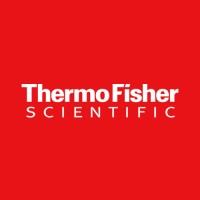CCR7 / PE-eFluor 610 / 4B12
Product Details
| Description | CD197 (CCR7) Monoclonal Antibody (4B12), PE-eFluor™ 610, eBioscience™ | |
|---|---|---|
| Conjugate | PE-eFluor 610 | |
| Clone | 4B12 | |
| Target Species | Mouse | |
| Applications | FC | |
| Supplier | Thermo Fisher Scientific | |
| Catalog # | Sign in to view product details, citations, and spectra | |
| Size | ||
| Price | ||
| Antigen | ||
| Host | ||
| Isotype |
About CCR7
The protein encoded by this gene is a member of the G protein-coupled receptor family. This receptor was identified as a gene induced by the Epstein-Barr virus (EBV), and is thought to be a mediator of EBV effects on B lymphocytes. This receptor is expressed in various lymphoid tissues and activates B and T lymphocytes. It has been shown to control the migration of memory T cells to inflamed tissues, as well as stimulate dendritic cell maturation. The chemokine (C-C motif) ligand 19 (CCL19/ECL) has been reported to be a specific ligand of this receptor. Signals mediated by this receptor regulate T cell homeostasis in lymph nodes, and may also function in the activation and polarization of T cells, and in chronic inflammation pathogenesis. Alternative splicing of this gene results in multiple transcript variants. [provided by RefSeq, Sep 2014]
The protein encoded by this gene is a member of the G protein-coupled receptor family. This receptor was identified as a gene induced by the Epstein-Barr virus (EBV), and is thought to be a mediator of EBV effects on B lymphocytes. This receptor is expressed in various lymphoid tissues and activates B and T lymphocytes. It has been shown to control the migration of memory T cells to inflamed tissues, as well as stimulate dendritic cell maturation. The chemokine (C-C motif) ligand 19 (CCL19/ECL) has been reported to be a specific ligand of this receptor. Signals mediated by this receptor regulate T cell homeostasis in lymph nodes, and may also function in the activation and polarization of T cells, and in chronic inflammation pathogenesis. Alternative splicing of this gene results in multiple transcript variants. [provided by RefSeq, Sep 2014]
About PE-eFluor 610
PE-eFluor™ 610 (PE-eF610, RPE-eF610) from Thermo Fisher Scientific is an orange-emitting tandem fluorophore that combines pycoerythrin (PE) and eFluor™ 610. The donor molecule, PE can be excited by the 488-nm blue, 532-nm green, or 561-nm yellow-green laser and and transfers energy to the acceptor molecule, eF610, which emitts light that can be captured with a 610/20 nm bandpass filter. PE-eF610 has an excitation peak at 565 nm and an emission peak at 607 nm, and is suitable alternative to PE-Texas Red®. PE-eF610 is mainly used for flow cytometry. This tandem is often a great option because of PE is excitable by multiple lasers due to its broad excitation spectrum and the eFluor™ 610 acceptor molecule emits brightly in the Orange/Red spectrum. Many cytometers are commonly set up with the 610/20 bandpass filter that can detect this fluorophore's emission. This dye is part of the larger eFluor™ dye family, developed by eBioscience which is now part of ThermoFisher Scientific.
PE-eFluor™ 610 (PE-eF610, RPE-eF610) from Thermo Fisher Scientific is an orange-emitting tandem fluorophore that combines pycoerythrin (PE) and eFluor™ 610. The donor molecule, PE can be excited by the 488-nm blue, 532-nm green, or 561-nm yellow-green laser and and transfers energy to the acceptor molecule, eF610, which emitts light that can be captured with a 610/20 nm bandpass filter. PE-eF610 has an excitation peak at 565 nm and an emission peak at 607 nm, and is suitable alternative to PE-Texas Red®. PE-eF610 is mainly used for flow cytometry. This tandem is often a great option because of PE is excitable by multiple lasers due to its broad excitation spectrum and the eFluor™ 610 acceptor molecule emits brightly in the Orange/Red spectrum. Many cytometers are commonly set up with the 610/20 bandpass filter that can detect this fluorophore's emission. This dye is part of the larger eFluor™ dye family, developed by eBioscience which is now part of ThermoFisher Scientific.
Experiment Design Tools
Panel Builders
Looking to design a Microscopy or Flow Cytometry experiment?
Validation References
Reviews & Ratings
| Reviews |
|---|
Looking for more options?
867 CCR7 antibodies from over 35 suppliers available with over 90 conjugates.





